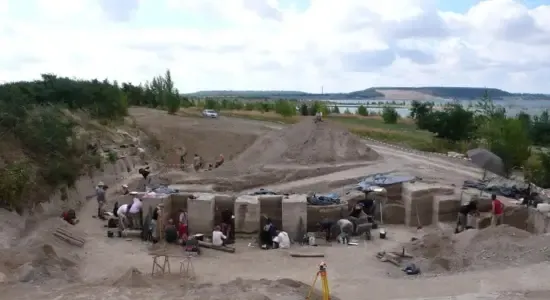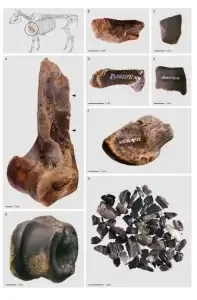Neanderthal "Fat Factory" Found: 125,000-Year-Old Bones Reveal Ice Age Survival Tricks A groundbreaking discovery from Germany is shedding new light on how Neanderthals endured harsh Ice Age winters—not with fire or fur, but with fat. Archaeologists have uncovered a 125,000-year-old site where ancient humans systematically cracked open bones to extract bone grease, a concentrated energy source used for survival.

Here’s how this prehistoric "fat factory" may have worked, and what it tells us about the resilience of early humans.
- The Site: A Former Animal Processing Camp The discovery took place at Neumark-Nord, an archaeological site near Halle, Germany. Researchers from the University of Leiden and the State Office for Heritage Management in Saxony-Anhalt found over 3,000 bones from large herbivores—mainly bison and horses—piled together in patterns that suggest organized fat extraction.
The bones weren’t just discarded leftovers. They had been deliberately broken, crushed, and processed, indicating Neanderthals were working to extract every calorie they could—especially fat.

- Bone Grease: Ice Age Superfood While meat was important, fat was crucial in colder climates. Bone grease, made by smashing and heating bones to extract lipids, provided:
Long-term energy
Higher calorie density than lean muscle
A storable, transportable food source
Neanderthals likely used heated stones or fires to render this fat, making it a critical element of their Ice Age diet.

Behavioral Complexity: Planning and Persistence
What sets this site apart is its repetitive processing behavior. The large volume of similarly processed bones suggests not a single event, but a seasonal or recurring activity—a kind of Ice Age butchering station.
This hints at:
Group cooperation
Seasonal food planning
Cognitive ability to process large animals efficiently
In other words, Neanderthals were not primitive scavengers—they were strategic, organized, and capable of managing resources for long-term survival.
- A Window into Prehistoric Life This discovery challenges outdated views of Neanderthals as unsophisticated hunters. Instead, it presents them as adaptive and intelligent—managing calories with the same kind of planning modern humans use today.
It also reinforces the idea that food storage and fat processing were already present long before agriculture or permanent settlements.
Did you know? Bone grease can contain up to 9 calories per gram, making it more energy-dense than most modern protein bars. For Ice Age humans, it was liquid gold.
👉 Want more surprising insights into ancient survival? Explore prehistoric breakthroughs and strange discoveries on fact fun — where weird meets wise.